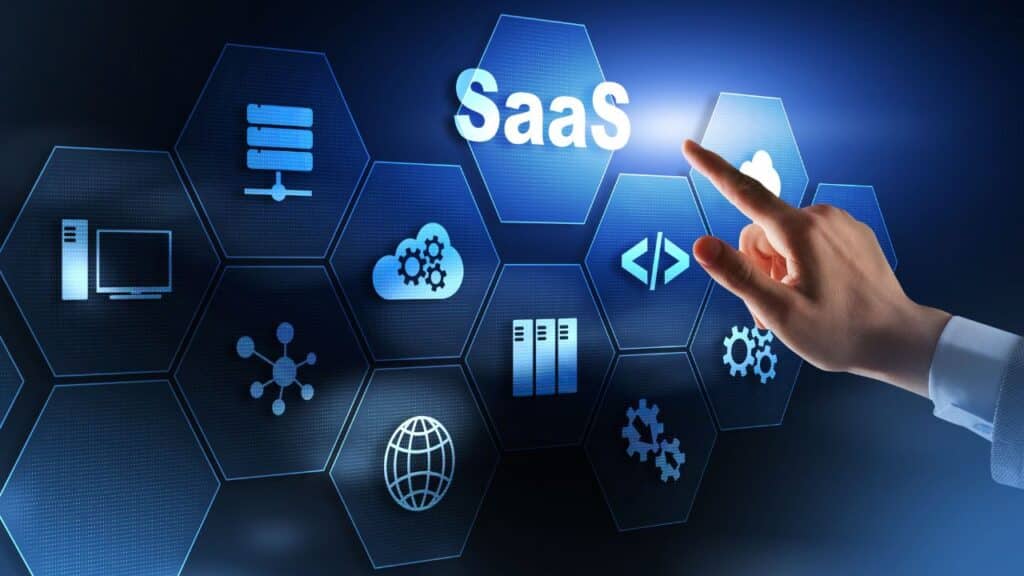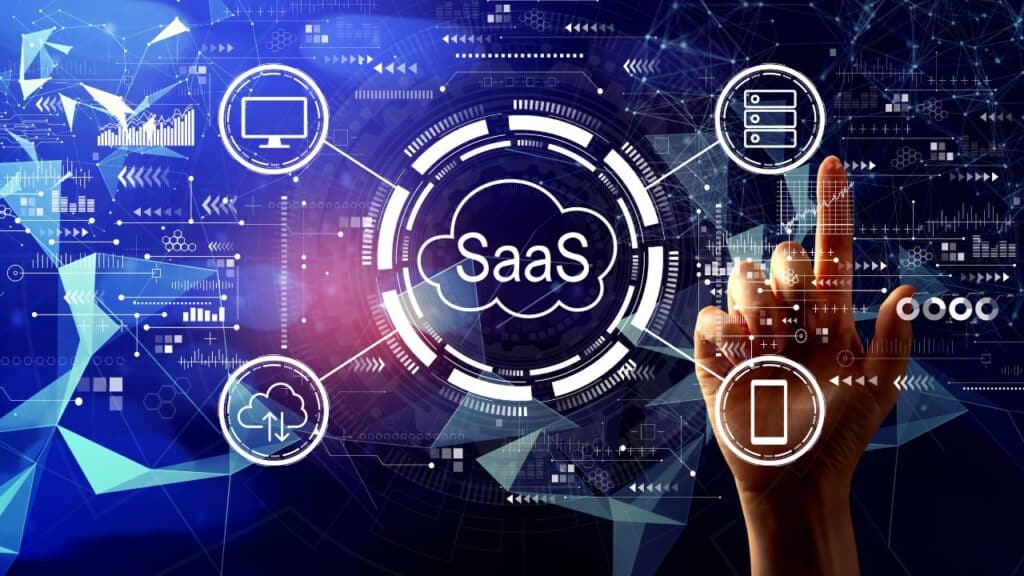The software-as-a-service (SaaS) industry is one of the fastest-growing sectors in technology, projected to reach $195 billion by 2025. The SaaS model provides immense benefits for businesses and users alike, offering flexibility, scalability, and cost-effectiveness. However, the path to launching a successful SaaS product is not without challenges.
From validating your idea to scaling the business, each phase demands strategic planning and execution. The competition is fierce, and customers have high expectations for seamless functionality and exceptional service. This guide will walk you through the 14 critical steps to launching a SaaS product that stands out in the crowded market. Whether you’re starting with an idea or preparing to scale, these steps will ensure your product’s success.
Step 1: Identify a Market Need
A successful SaaS product begins with solving a real problem. Customers adopt SaaS solutions to simplify their workflows, improve productivity, or address specific challenges. Without a clear understanding of the target market, you risk building a product that no one needs. Identifying a market gap ensures your product has a strong foundation.
How to Identify a Market Need:
- Talk to Potential Customers: Conduct interviews and surveys with your target audience. Focus on their pain points and current frustrations with existing solutions.
- Study Market Trends: Tools like Google Trends, LinkedIn Insights, and industry reports help you analyze growing demands.
- Examine Competitors: Assess competitor offerings and find gaps where your product can deliver better value.
Example: Dropbox became a major success because it addressed a specific issue—file storage and sharing—at a time when existing solutions were inefficient or overly complex.
Key Takeaways:
- Your SaaS product should tackle a significant issue that customers deeply care about.
- The more specific the problem, the easier it will be to market your solution.
Step 2: Define Your Value Proposition
The value proposition is your product’s promise to customers. It’s a concise statement that answers why someone should choose your SaaS over others. A compelling value proposition can significantly impact your product’s marketing, helping to convert leads into loyal customers. It is the backbone of your branding and communication strategy.
Crafting a Strong Value Proposition:
- Focus on Benefits: Instead of highlighting features, emphasize how your product improves the user’s experience or solves their problem.
- Be Clear and Simple: Avoid technical jargon. Your value proposition should be understandable at a glance.
- Differentiate from Competitors: Identify what sets your product apart, such as ease of use, price, or specific functionality.
Example: Slack’s value proposition, “Be more productive at work with less effort,” resonates because it directly appeals to busy professionals looking to save time.
Step 3: Create a Detailed Business Plan
Your business plan is the blueprint for your SaaS product’s success. It helps you articulate your vision, secure funding, and set measurable goals. Investors and stakeholders are more likely to support a well-documented plan that showcases market knowledge, financial forecasts, and long-term growth strategies. This document also helps align your team with your mission.
Key Sections of a SaaS Business Plan:
- Market Analysis: Define your target audience, their needs, and how your product meets those needs.
- Revenue Model: Choose a subscription-based pricing model that aligns with your target market.
- Product Roadmap: Outline features to be developed, prioritizing based on user needs and business goals.
- Financial Projections: Provide realistic estimates for costs, revenue, and profit over the next three to five years.
Why It Matters:
A well-thought-out business plan not only keeps your team aligned but also attracts investors by showing you’ve done your homework.
Step 4: Validate Your Idea
Before investing resources into full-scale development, validate your SaaS idea to confirm demand. Validation reduces the risks of failure by confirming there is a paying market for your solution. It also provides insights into customer behavior, which can inform future product improvements and features.
How to Validate Your Idea:
- Build a Minimum Viable Product (MVP): Create a simplified version of your SaaS product that includes only the core features.
- Launch a Beta Program: Invite early adopters to test your MVP in exchange for feedback. Tools like user testing can help gather detailed insights.
- Test Interest with Pre-Sales: Offer pre-orders or waiting lists to measure market demand before the full launch.
Example: Airbnb started as a simple website to rent air mattresses in a single city. Early feedback helped them expand into the global platform we know today.
Step 5: Assemble the Right Team
Your team is the backbone of your SaaS product. Hiring the right people ensures smooth execution, from development to customer support. The success of your SaaS depends on a cohesive team that shares your vision and has the technical and creative skills needed to deliver excellence.
Critical Roles in a SaaS Team:
| Role | Responsibilities |
|---|---|
| Product Manager | Oversees the product vision, roadmap, and feature prioritization. |
| Developers | Build and maintain the application. |
| UX/UI Designers | Create an intuitive and visually appealing interface. |
| Marketing Specialists | Plan and execute campaigns to drive customer acquisition. |
| Customer Support Team | Address user concerns and maintain satisfaction. |
Pro Tip: Consider outsourcing non-core roles (e.g., graphic design or QA testing) to save costs during the early stages.
Step 6: Design a User-Centric Interface
User experience (UX) is one of the top reasons SaaS products succeed or fail. A cluttered interface can drive users away, even if your features are top-notch. Designing a user-centric interface ensures a positive first impression, reduces churn, and increases adoption rates among potential customers.
Principles of Great UX Design:
- Keep It Simple: Reduce the cognitive load on users by limiting unnecessary elements.
- Provide Onboarding: Use guided tours or tutorials to help new users navigate the platform.
- Optimize for Accessibility: Ensure your SaaS product is usable by individuals with disabilities.
Example: Canva’s drag-and-drop interface has made it the go-to design tool for beginners and professionals alike.
Step 7: Develop Your Product
Development is where your vision comes to life. Partnering with skilled developers or agencies is crucial. A well-structured product development process not only ensures timely delivery but also sets the stage for future scalability and easy integration of new features.
Key Considerations for Development:
- Technology Stack: Choose scalable frameworks and programming languages that support future growth.
- Testing: Conduct rigorous testing to identify and fix bugs before launch.
- Iterative Development: Use agile methodologies to deliver updates incrementally based on user feedback.
Step 8: Ensure Data Security and Compliance
Customers entrust you with their sensitive data, and this trust can significantly impact the success of your product. Breaches or non-compliance with regulations can result in legal troubles, loss of customer trust, and reputational damage. Prioritizing security builds long-term confidence in your SaaS product.
Security Best Practices:
- Use Encryption: Secure data both in transit and at rest with encryption protocols.
- Adopt Two-Factor Authentication: Add an extra layer of protection for user accounts.
- Perform Regular Security Audits: Identify and fix vulnerabilities proactively.
Step 9: Define a Pricing Strategy
Your pricing strategy can determine your product’s adoption rate and profitability. A well-researched pricing model strikes the right balance between affordability for customers and revenue for your business. It can also help segment your audience and attract the right user base.
Popular Pricing Models:
- Freemium: Offer basic features for free and charge for advanced features.
- Tiered Pricing: Provide multiple plans catering to different user needs.
- Flat-Rate Pricing: Offer a single subscription rate for all features.
Pro Tip: Constantly test and optimize pricing to identify the optimal price that maximizes customer acquisition and revenue.
Step 10: Develop a Comprehensive Marketing Strategy
Effective marketing ensures your SaaS product reaches its audience. It doesn’t matter how amazing your product is if no one knows about it. A robust marketing plan helps build brand awareness, educate potential users, and convert prospects into paying customers.
Effective Channels for SaaS Marketing:
| Channel | Description |
|---|---|
| Content Marketing | Blogs, eBooks, and videos to build trust and establish thought leadership. |
| Email Campaigns | Personalized emails to nurture leads and retain customers. |
| Paid Ads | Target specific keywords and demographics on Google and social platforms. |
| Affiliate Marketing | Partner with influencers or websites to promote your product. |
Step 11: Launch Your Product
The product launch is a critical milestone that sets the tone for customer acquisition and engagement. A strategic launch plan creates buzz, captures attention, and generates initial traction. Launching effectively helps you test your market readiness and set a strong foundation for growth.
Steps to a Successful Launch:
- Soft Launch: Test your product with a small audience to address any last-minute issues.
- Build Hype: Use teaser campaigns, countdowns, and influencer collaborations.
- Post-Launch Follow-Up: Engage with early users, address concerns, and implement feedback quickly.
Step 12: Provide Top-Notch Customer Support
Retaining customers is just as important as acquiring them. Happy customers are more likely to recommend your product to others and remain loyal for longer. A responsive and empathetic support team can significantly improve the user experience and reduce churn rates.
How to Excel in Customer Support:
- 24/7 Availability: Offer round-the-clock support for global customers.
- Self-Service Options: Provide FAQs, knowledge bases, and video tutorials.
- Customer Feedback Loop: Use tools like Net Promoter Score (NPS) to gauge satisfaction.
Step 13: Track Key Metrics
Metrics help you measure progress and make data-driven decisions. You can identify what’s working and where improvements are necessary by monitoring these KPIs. Over time, tracking key metrics helps you refine your strategies and stay ahead of market trends.
Important SaaS Metrics:
| Metric | Importance |
|---|---|
| Net Revenue Retention (NRR) | Indicates revenue growth or decline from existing customers. |
| Customer Onboarding Rate | Shows how effectively new users are integrating your product. |
| Feature Adoption Rate | Reveals which features are most valuable to customers. |
Step 14: Scale Your Business
Scaling requires a focus on expanding capabilities without sacrificing quality. A well-timed scaling strategy can help you seize growth opportunities and outperform competitors. With a scalable model, your SaaS product can sustain growth while maintaining high customer satisfaction.
Strategies for Scaling:
- Automation: Use AI tools for marketing, customer support, and operational tasks.
- Geographic Expansion: Tailor your product to new markets and regions.
- Partnerships: Collaborate with other businesses to offer bundled solutions.
Conclusion
Launching a SaaS product is a marathon, not a sprint. By following these 14 steps, you can transform an idea into a scalable and profitable business. Focus on understanding your customers, continuously improving your product, and building a strong team.
The SaaS industry is filled with opportunities for those willing to innovate and adapt. Start small, aim big, and keep iterating to stay ahead of the competition.













































